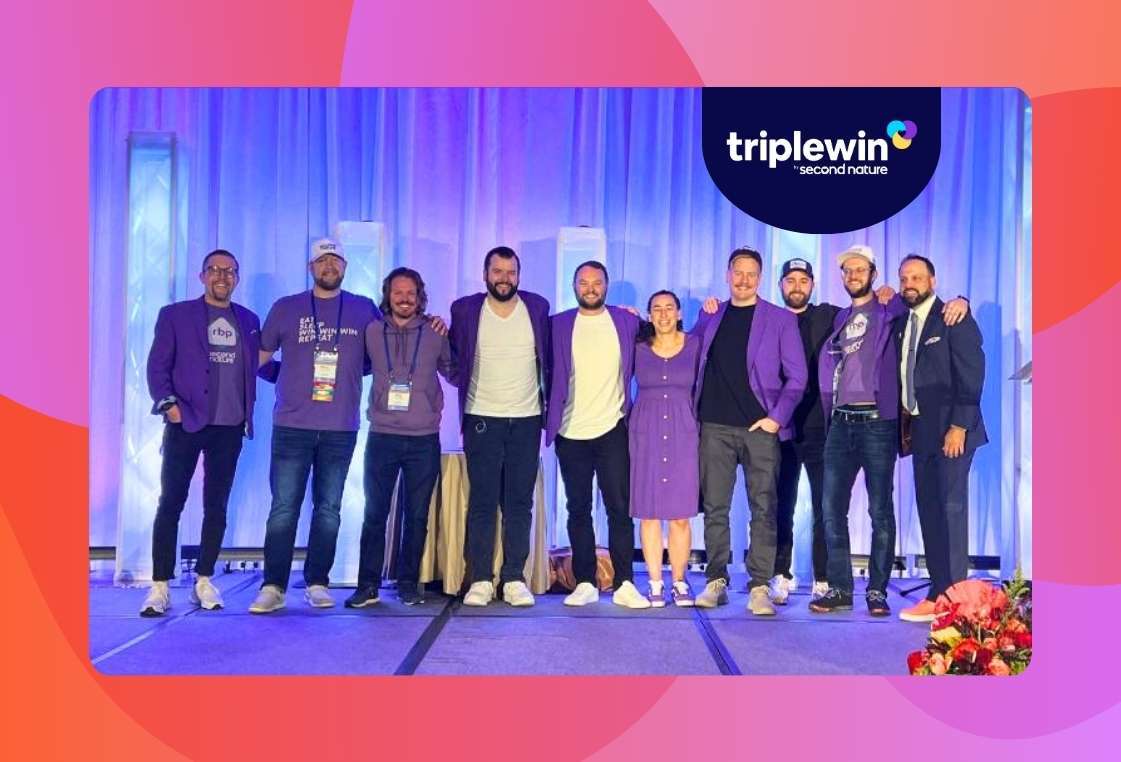Melissa Gillispie is the Director of Leasing and Property Management at JWB Property Management, and the 2025 NARPM Jacksonville President. She has over 11 years of experience in property management and is currently a Second Nature Triple Win Mentor.
About two years ago, I had a big shift in my professional life. I was promoted into a director position, and, for the first time in my career, I was a layer removed from most of the individual contributors on my team.
As someone who cares deeply about coaching, knowing my team, and forming relationships, it was jarring. I felt disconnected, and it was a tough adjustment.
Shortly after, I was in a leadership class when one of the instructors asked a simple question: “How much time do you spend with the people who are doing the work?”
It was pretty eye-opening for me, in part because I’ve always felt that JWB is a social workplace where we all want to get to know each other. But the truth was, I wasn’t spending that much time with my team, and it was having a negative effect.
I wanted to make sure that members of my team knew where I was coming from when I communicated things to them; that I had their best interest at heart, and that I wanted to be a coach, not a dictator. So the next logical question was, “how can I build up these relationships to foster more connection and trust?”
How to build relationships with your team
Once I started thinking deliberately about how to form closer relationships with the “doers” on my team, it actually came pretty naturally. The challenge wasn’t in coming up with the ideas, but in actually executing them.
In a business as busy as property management, it’s not easy to make time for team building. It tends to be one of the first things to fall off the priority list when other things pop up. The most important part of setting up any kind of team building program is to commit to it and see it through.
With that said, here are some of the different ideas that I’ve either done myself, seen done well at JWB, or heard positive reviews of from people in my network.
1:1 coffee and lunches
This was the first large-scale, deliberate plan that I put in place when I realized that I needed to form stronger relationships with my team. I committed to taking a different member of my team out for coffee or lunch each week.
I set no agenda and I had no ulterior motives; it was purely to get to know each other. I tried to minimize how much we talked shop, and instead learn what kinds of things each person enjoys, how they communicate, and what they’re passionate about. This wasn’t a small undertaking for me, because the teams I managed totalled over 50 people, but it was well worth it. I connected with people that I had otherwise never even met.
Notes of gratitude
Another approach I took was to write a couple of notes of gratitude to teammates each week. They were delivered privately, and were just intended to let that person know that I saw how hard they were working and what they were achieving.
If you have a performance management or HR tool, take a look and see whether it includes a feature that will let you do this virtually. You can even set a calendar reminder each week to sit down and write a nice note to a couple of teammates. They don’t have to be long. The point is just to make the recipient feel seen.
Team appreciation events
While an office pizza party may get a bad rap, in-office team building can still be impactful. We recently celebrated team appreciation week, and we made a big deal of it! We didn’t announce the full scope of what we were going to do, so it was a nice surprise for most of the team.
We had a team lunch, but we also gave out awards and hosted free raffles for our employees to win fun prizes. Just making the time was important in itself.
Desk rotations
Another tactic we use from time to time is switching up where people are sitting. Not only does it offer a literal fresh perspective, but it also helps break down silos across teams. People make friends with the people physically closest to them, and for leaders and managers, sitting with different groups can help build relationships and trust with them, too.
Setting expectations
I am a huge proponent of setting expectations, especially when onboarding new employees. I think one of the most important things you can do as the leader of a team is set non-negotiables for how people behave and how they treat each other.
Not only does this keep people in check, it also gets everybody on the same page about how their teammates and managers are going to communicate. If you set the expectation up front that you’re going to provide weekly feedback in order to help everyone grow, your employees won’t be caught off guard when they receive constructive criticism.
Far-reaching impacts
Of course we all want to get along well with our colleagues, and we want to like the people we work with. But at the end of the day, what do we really get out of fostering these relationships? In my experience, the impacts are pretty significant.
- Fostering better work: When people feel seen, heard, and appreciated, they’re much more motivated to show up to work as their best selves. They’re going to perform better and go above and beyond, because they know that effort will be recognized.
- Increasing team retention: Again, no one wants to be at a workplace where they feel undervalued. When people have more trust in their team, they’re likely to stick around longer.
- Creating a safe space for hard conversations: People are more likely to open up about tough topics when they don’t feel like they’re going to be judged, especially when they’re talking to their managers. By creating a safety net for difficult conversations, you allow your employees to be more honest and resolve challenges more quickly.
- Increasing receptivity: Employees who take feedback well are invaluable, and one of the best ways to help them do that is by making sure they trust you to give honest, effective evaluations. When they know you’re coming from a place of genuine helpfulness, as opposed to tearing them down, they’re less afraid and more receptive.
- Building accountability: Team members are also more likely to hold each other accountable when there is a closeness and trust factor. When they know their feedback will be taken in a positive light, they feel more confident providing it in the first place.
All of this makes people more comfortable, more productive, and more likely to approach their work with a positive attitude.
True at any size
One thing I want to make sure to emphasize is that this isn’t just something you need to focus on at a larger company like JWB. While smaller teams often know each other well just by the nature of their work, that isn’t always true.
For example, a small team may have remote workers who only get a chance to connect with in-office staff a couple of times per week. Or you may have maintenance coordinators, leasing agents, or inspection staff who spend most of their time out of the office, visiting properties. They may not have the same opportunities to forge close relationships with their teammates, and may feel disconnected.
Just because there isn’t a layer of management between you and the rest of the team doesn’t mean you don’t need to invest time and energy to form connections. In fact, if you have to ask the question at all, it’s probably worth it to put some 1:1 meetings on the calendar and get a pulse check from your team. It can’t hurt to get the ball rolling.
Final thoughts
When you’re a busy property management leader, it can be tough to find the time and energy to focus on team building. But you have to do the work so that the people who work for and with you understand who you are, where you’re coming from, and why you care.




